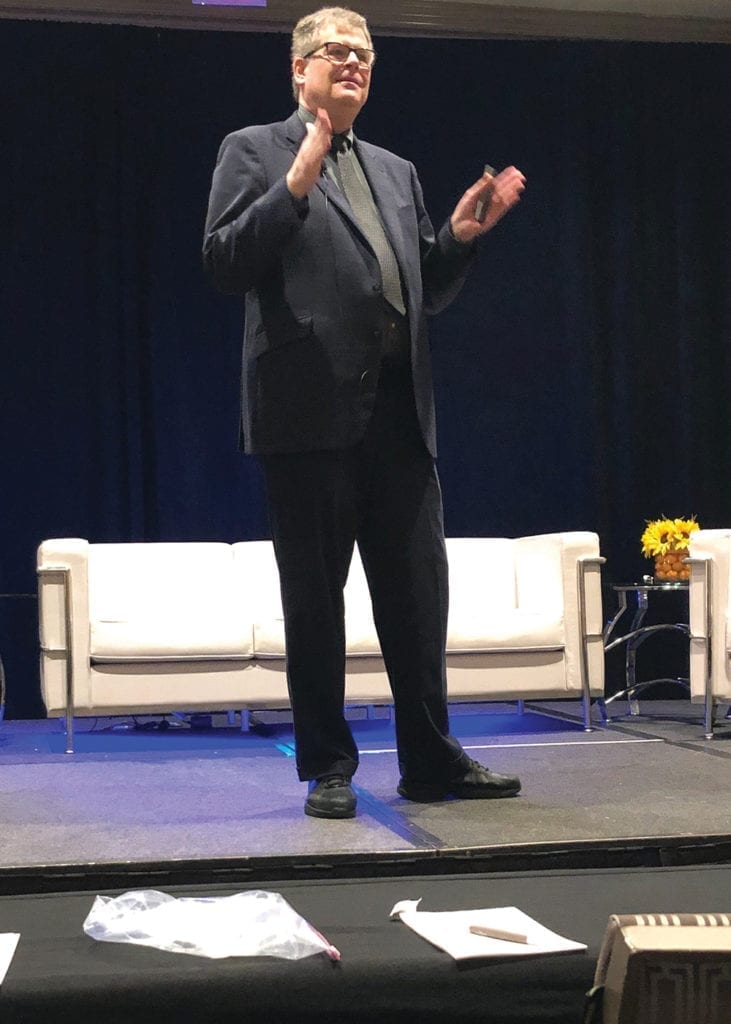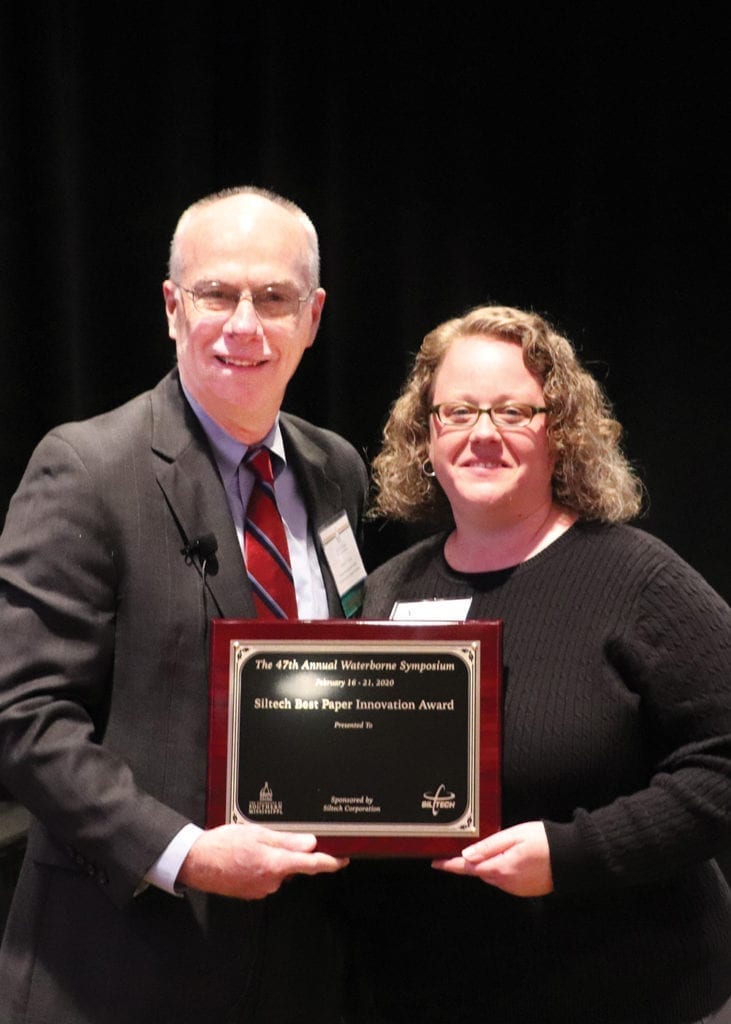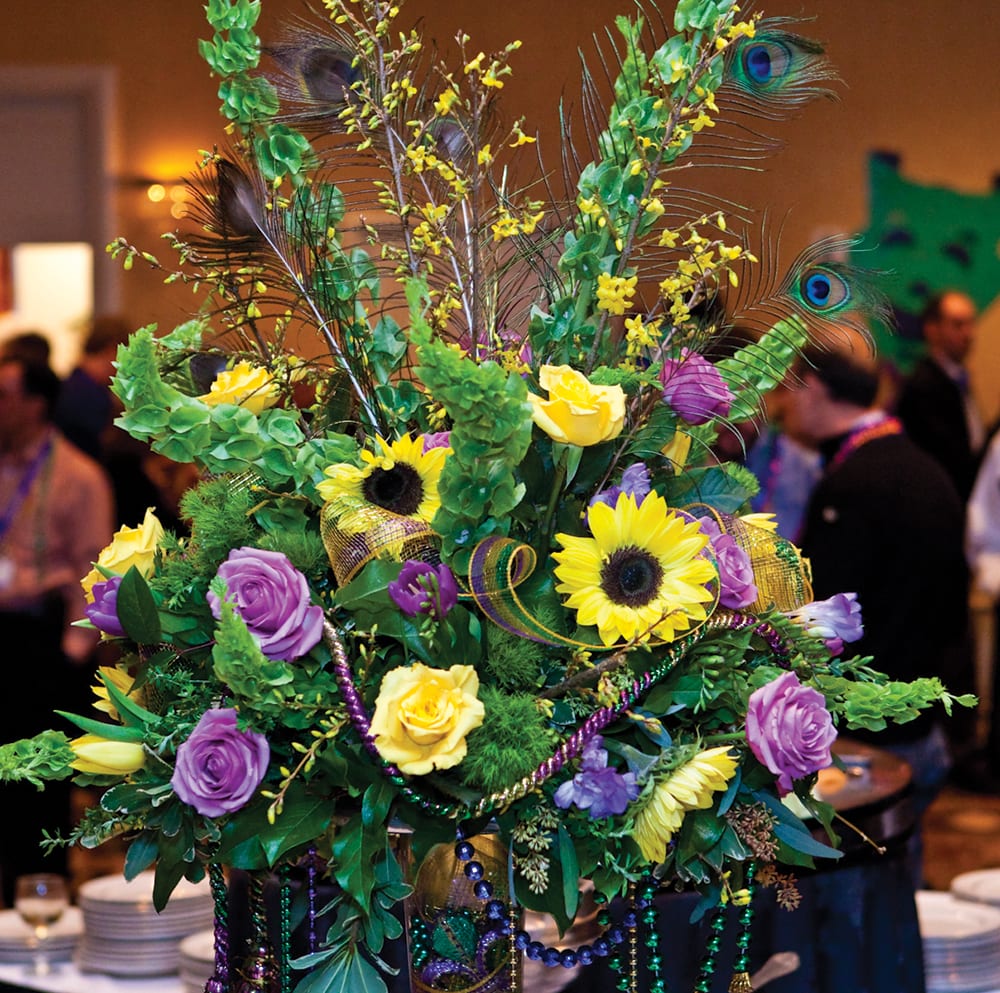As New Orleans, LA, prepared for an onslaught of Mardi Gras revelers, more than 250 coatings industry formulators, scientists, chemists, and technical managers came together in the Crescent City for the 47th Annual International Waterborne, High-Solids and Powder Coatings Symposium (Waterborne Symposium), held February 16-21. They joined more than a dozen students and professors from the University of Southern Mississippi (USM) School of Polymer Science and Engineering, which hosts the event, for three days of technical presentations, networking, and to connect with exhibitors.
Technical papers presented across five tracks—additives, corrosion, high solids, pigments, and resins—focused on the latest advances in the science and technology of environmentally friendly coatings. Setting the stage for technical presentations, plenary speaker Dean Webster, professor and chair, Coatings and Polymeric Materials Department, North Dakota State University, presented the talk “Towards Sustainability in Coatings Technology: Progress, Opportunities, Barriers.” In it, he posited the question, “how far can we go in creating a fully sustainable coatings industry?” The talk traced industry progress to meet regulatory challenges, including the successful reduction of volatile organic compounds (VOCs) and the switch to more environmentally friendly technologies, such as waterborne formulation and powder coatings, as well as the use of high solids and radiation-cured coatings. He noted the industry’s longtime use of renewable materials, for example, seed-based oils and bio-based solvents. Looking forward, Webster discussed opportunities for energy efficiency in curing technology and new areas of research to increase longevity and durability of coatings, expand the use of bio-based materials, and develop more functional coatings.
Following the plenary session, presenters heard from a panel of experts, each with a unique perspective and insight on the topic of “Efficient and Sustainable Coatings.” Panelists included David Darling, vice president, Health, Safety and Environmental Affairs, American Coatings Association; Anthony Woods, segment director, AkzoNobel Industrial Coatings; and Mark Nonweiler, president, A.P. Nonweiler Corp.
In the Sydney Lauren Memorial Lecture, the ninth since its inception in 2012, Dr. Robson Storey of USM shared his team’s work to identify an alternative chemistry for polyurethane/polyurea polymers cured by azide-alkyne cycloaddition. In presenting the paper, “Alternative Polyurethane Coatings Cured Via Azide-Alkyne Cycloaddition,” Storey described an approach that modifies commercially available resins by attaching azide and alkyne groups. The process achieves an azide content level in the modified resin that is low enough to eliminate explosion risk, while retaining the azide functionality needed to form crosslinks.
In addition to the technical program, nearly 20 leading suppliers to the industry, including CoatingsTech, offered a range of related services, equipment, and expertise in the Technology Showcase exhibit hall. Exhibitors offered pigments, additives, crosslinkers, testing materials, laboratory services, scientific instruments and equipment, resins, and more.
Following the conference, three presenters were recognized for their papers’ extraordinary contributions to the technical program. Top honors for the Siltech Best Paper Award went to Lisa Kemp, chief scientific officer at Reactive Surfaces, Ltd., for her presentation on “Carbon Capture Coatings.”
Earning the PCI award for technical excellence was Dr. Thomas Schmidt, of Huafeng Innovation & Business Development, for the paper, “Photosensitive Haptic Coatings for Athletic Footwear & More.”
Jessica Davison, a Ph.D. candidate at USM, earned best oral paper honors for her presentation of “Utilizing Hydrogels in Coatings to Understand Polymeric Materials Corrosion Protection Processes.”
In addition to Davison, many USM students participated in the event, with three other graduate students also sharing their research with attendees as part of the technical program. Numerous students were on hand throughout the event to answer questions about their work, which was presented in 11 graduate and nine undergraduate posters. Three graduate and two undergraduate student posters were honored:
• “Hydrolytically Degradable Poly(B-Thio-ether Ester Ketal) Thermosets: Incorporating Hydrolyzable Ketal Crosslinks to Achieve Tunable Network Degradation,” by Benjamin Alameda
• “Synthesis and Evaluation of Polyisobutylene-Grafted Graphene Nanocomposite Films with Improved Oxygen Barrier Properties,” by Dana Pinson
• “Polymer Thermosets with Command Construct and Destruct Properties,” by William Walker
• “Development of a Low-Cost Reusable 3D Printed Twin-Screw Nanofeeder,” by Hayden Hanna
• “Thermo-Mechanical Degradation and Stabilization of Aromatic Polysulfones During Melt Processing Operations,” by Nicholas Smith
The Waterborne Symposium is an important element of the USM academic program and has a central role in supplying the industry with qualified candidates to fill technical positions. Proceeds help the university recruit and retain students who show the most promise as future coatings industry innovators, supporting graduate student stipends and undergraduate student scholarships, acquisition and maintenance of equipment, and more. USM reports that the Waterborne Symposium has funded more than $240,000 in undergraduate scholarships over the eight most recent academic years alone.
The 48th Waterborne Symposium will be held at the Sheraton New Orleans from February 7 to 12, 2021. USM issued a Call for Papers in March, with abstract submissions due September 15. For more information about categories of interest and how to submit, visit the Waterborne Symposium website, https://www.waterbornesymposium.com/submit.
CoatingsTech | Vol. 17, No. 4 | April 2020
